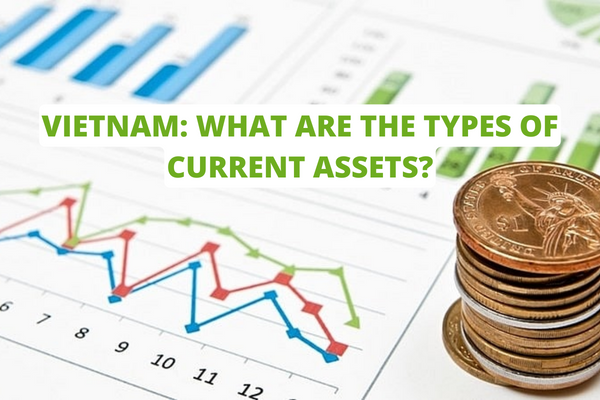Vietnam: What are the types of current assets? How to calculate and distinguish between current assets and fixed assets?
What is current property according to Vietnamese regulations?
Current assets are short-term assets and assets that are regularly circulated in the course of business activities of the enterprise. Current assets are expressed in parts including cash, securities, high liquidity, in-kind (materials, goods), and short-term receivables.
Currently, according to the provisions of the Enterprise Law 2020 of Vietnam and related documents, there is no regulation on current assets. Accordingly, you need to understand the above information about working capital to use in accounting and business administration.
In enterprises, current assets include production current assets and circulating current assets, specifically:
+ Production current assets include supplies and equipment in reserve to prepare for the continuous production process, including main raw materials, auxiliary materials, fuel, spare parts, and small tools...
+ Circulating current assets include unsold products and goods, capital in cash, and capital in payment.
What are the types of current assets in Vietnam?
- Classification of current assets based on economic characteristics:
In addition to classifying current assets by business, current assets are also divided based on economic characteristics. Current assets can be classified according to their economic characteristics and convertibility:
Firstly: Money
Current assets include all cash on hand, cash in bank accounts, and money in transit. Note that the money here is not only cash but also includes:
+ Bank deposits.
+ Money in payment.
+ Money in the form of checks of all kinds.
+ Money in credit cards and ATM cards.
Secondly: Gold, silver, precious stones, precious metals
+ Gold, silver, precious stones, and precious metals belong to the group of special assets mainly used for reserve purposes. But in some industries such as banking, insurance, finance, the value of gold, silver, diamonds, precious stones, precious metals .... very big.
Thirdly: Cash equivalents
+ This is a group of assets that are highly convertible, meaning they are easy to sell and convert to cash when needed. But not all securities fall into this category. New easy-to-sell short-term securities called current assets fall into this category.
+ Besides, short-term commercial papers with high safety are also included in this group. For example commercial promissory notes, bank drafts, complete sets of documents...
Fourthly: Prepaid expenses
+ Prepaid expenses include money that the company has paid in advance to sellers, suppliers, or other objects. Some prepayments carry a high level of risk due to their high reliance on unpredictable factors.
Fifthly: Accounts Receivable
+Receivables are a very important asset of an enterprise, especially a trading company or a commodity trading company. Trading activities between parties generate trade credits. In fact, receivables include many different items depending on the nature of the purchase and sale relationship and the contractual relationship.
Sixthly: Goods and supplies
Goods and supplies are tracked in an item called inventory. Inventory here does not mean unsold surplus. It actually includes all the raw materials in stock, in the workshop or on the counter. It includes many types: main materials, auxiliary materials, auxiliary materials, finished products...
Seventhly: Expenses waiting to be allocated
+ Actual amount of materials and expenses incurred but not yet allocated to the cost of products or services. These items are included in the cost of goods for the appropriate period of time.

Vietnam: What are the types of current assets? How to calculate and distinguish between current assets and fixed assets?
What is the difference between current assets and fixed assets in Vietnam?
Calculating current assets:
Current assets = Cash + bank deposits + receipts + liabilities + inventory + short-term investments + prepaid expenses.
Distinguish between current and fixed assets:

Above is how to distinguish current assets and fixed assets that readers can refer to.
LawNet
